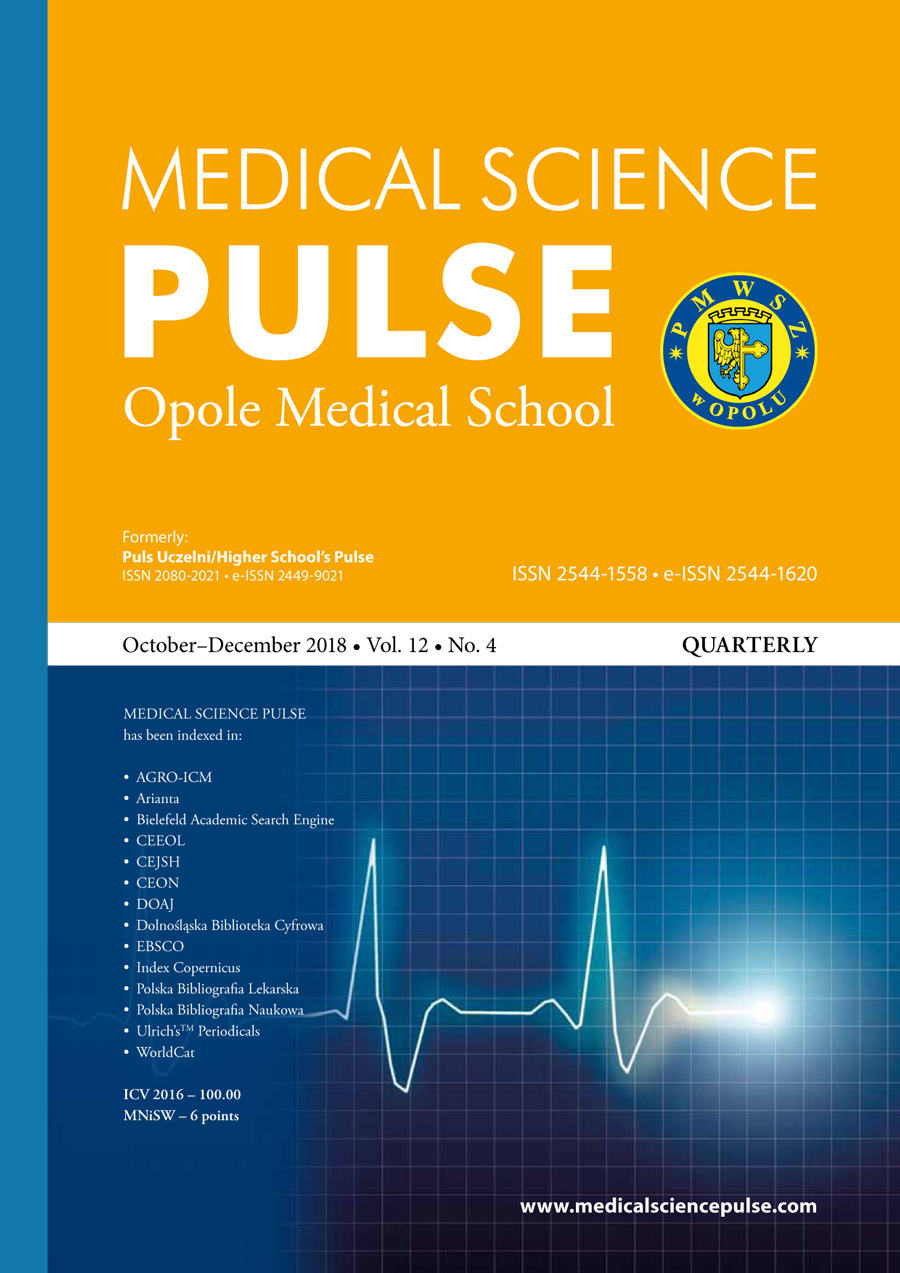Pyoderma gangrenosum – an interdisciplinary approach to the disease
Pyoderma gangrenosum – an interdisciplinary approach to the disease
Author(s): Aleksandra Kapuśniak, Aleksandra Czachor, Grażyna WąsikSubject(s): Health and medicine and law
Published by: Państwowa Medyczna Wyższa Szkoła Zawodowa w Opolu
Keywords: pyoderma gangrenosum; ulcers; neutrophilic dermatosis
Summary/Abstract: Pyoderma gangrenosum is a rare dermatosis of unknown etiology. It is classified as being a neutrophilic dermatosis, in which there is inflammatory infiltration consisting primarily of mature polynuclear leukocytes. Its pathogenesis is multifactorial and is thought to involve neutrophilic dysfunction, inflammatory mediators in combination with a genetic predisposition for the disease. Neutrophilic infiltration is observed in new lesions, while necrosis associated with fibrosis and granulomas are seen in chronic lesions, however these findings are not pathognomonic. Pyoderma gangrenosum can occur at any age. However, it most commonly develops in young and middle-aged adults predominantly women between the second and fifth decades of life. Grossly, pyoderma gangrenosum is characterized by skin lesions in the form of rapidly spreading ulcers, with cylindrical edges and necrotic bottoms. These ulcers are painful and crusted but have undermined borders. Pyoderma gangrenosum commonly presents with the rapid development of one or more purulent ulcers with undermined borders on sites of normal or traumatized skin. Pyoderma gangrenosum is often associated with other systemic diseases such as ulcerative colitis, Crohn’s disease, monoclonal gammopathies, IgG or IgA myelomas and tumors of internal organs and hematopoietic system diseases, which supports the immunological mechanisms involved in the pathogenesis of the disease. Of note, neutrophilic infiltration associated with other extracutaneous manifestations and different systemic disorders can co-exist with pyoderma gangrenosum. Despite the recent development of immune modulating drugs in the treatment of skin conditions, steroid therapy still plays a pivotal role. For patients with mild pyoderma gangrenosum, the local application of topical corticosteroids or calcineurin inhibitors can be sufficient. Systemic therapy is necessary in patients with more extensive disease. The role of surgery is controversial, as it is associated with the induction of pathergy. The clinical, histopathologic and laboratory findings in pyoderma gangrenosum are non-specific, and a diagnosis can only be made once other diagnoses have been excluded.
Journal: Medical Science Pulse
- Issue Year: 12/2018
- Issue No: 4
- Page Range: 61-64
- Page Count: 4
- Language: English

